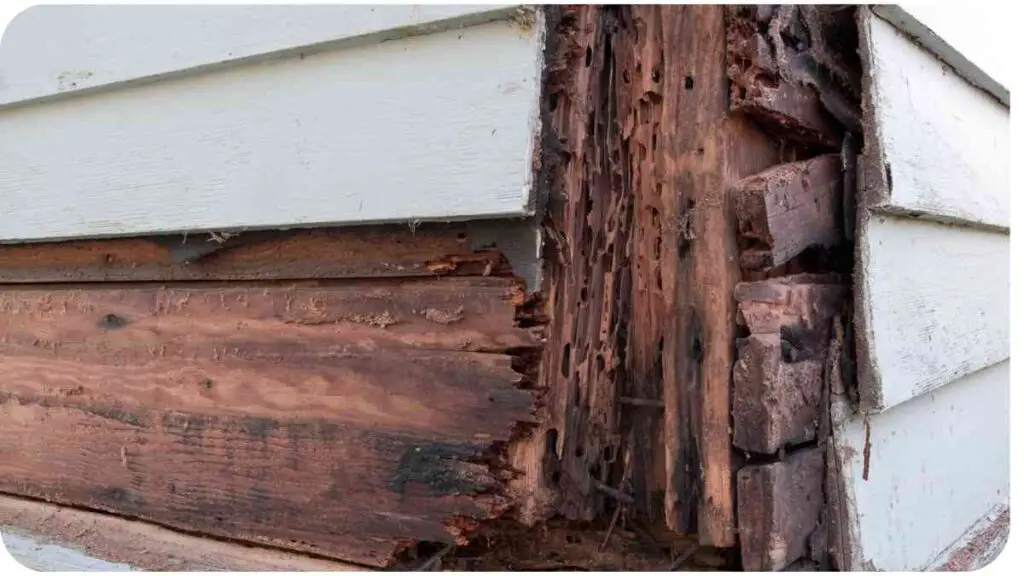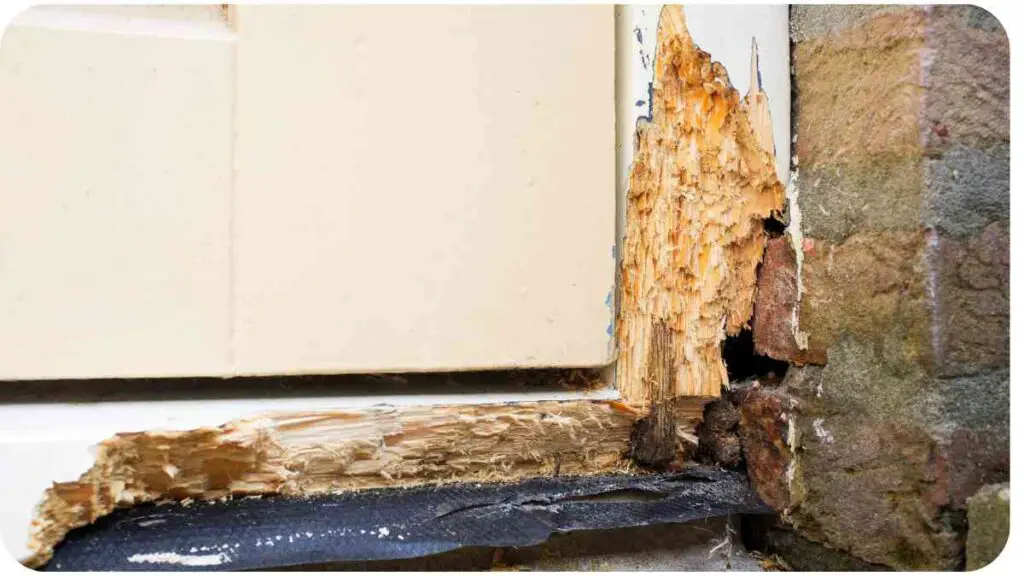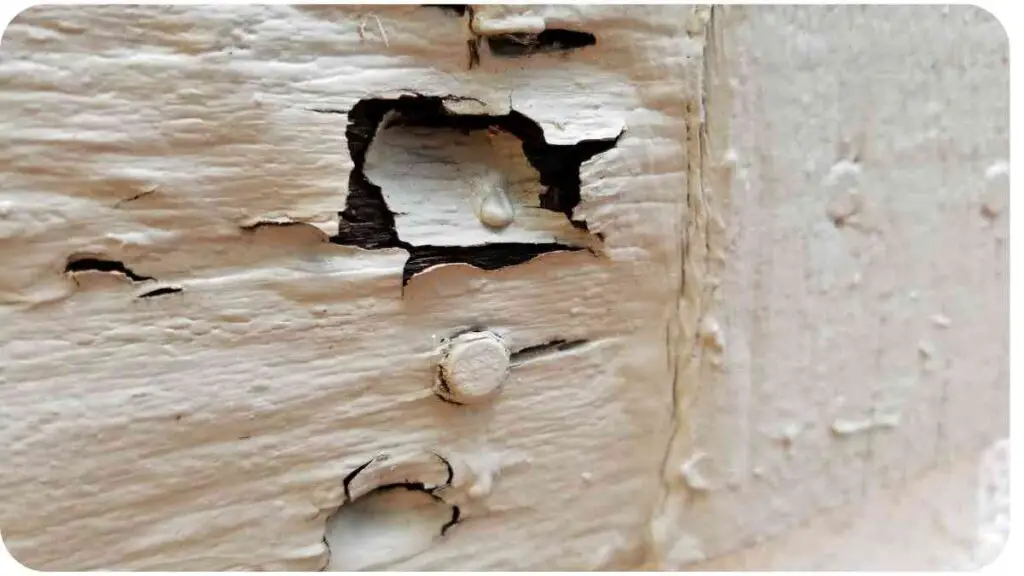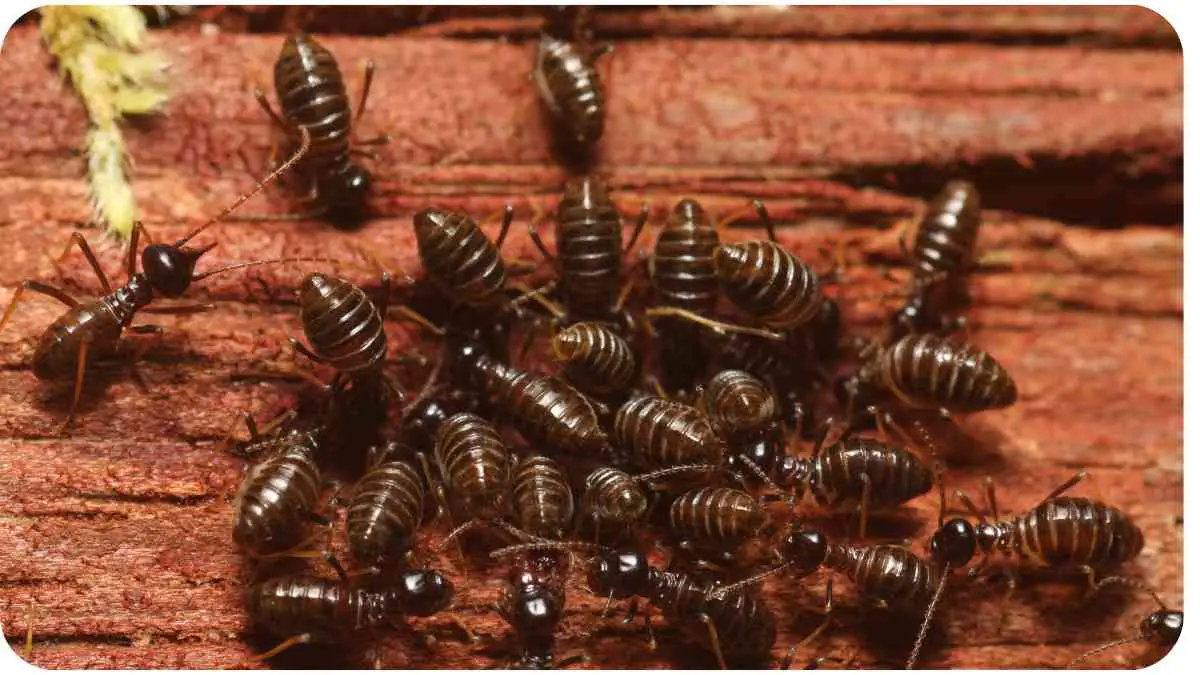Your pergola is more than just a beautiful structure; it’s an outdoor retreat. However, two of the most significant threats to its longevity are wood rot and termites. These hidden dangers can turn your outdoor paradise into a frustrating headache if not properly managed. The good news? With the right knowledge and preventative measures, you can keep your pergola looking great for years.
In this guide, we’ll explore the causes of wood rot, how termites attack wooden structures, and, more importantly, how to prevent and fix these problems. Let’s dive in and learn how to protect your investment.
| Key Takeaways |
|---|
| Regular inspections can help catch wood rot and termite damage early. |
| Treating wood with sealants and termite-resistant chemicals prevents damage. |
| Replacing damaged wood promptly ensures the structural integrity of your pergola. |
| Termite and wood rot damage have distinct signs: hollow wood for termites, soft and crumbling wood for rot. |
| Consult a professional for extensive damage or if you’re unsure how to proceed. |
What Causes Wood Rot in Pergolas?

Moisture and Humidity
Wood rot occurs when moisture seeps into your pergola’s wood. High humidity levels, rain, or even the morning dew can penetrate untreated wood, causing decay over time. When moisture lingers, fungi begin to thrive, feeding on the wood and breaking it down.
Battling wood rot in your outdoor structures can be frustrating. Regular inspections and timely treatments can make a difference. Learn more about why sustainable landscaping is the future and how you can adopt eco-friendly practices to prevent long-term damage.
Poor Ventilation
If your pergola lacks proper ventilation, the trapped moisture accelerates the process of rot. Good airflow helps dry out the wood after exposure to water, keeping it in better shape for longer.
Inadequate Wood Treatment
Unprotected wood is highly vulnerable to rot. If your pergola wasn’t treated with a sealant or waterproofing agent, it’s at greater risk. Over time, even treated wood needs reapplication of these protective layers to remain effective.
Signs of Wood Rot
Wondering if your pergola already has wood rot? Look for signs like soft or spongy wood, discoloration, and a musty smell. If the wood crumbles easily when you touch it, you’re likely dealing with rot.
How Termites Attack Pergolas

Types of Termites
There are two main types of termites you should be aware of: subterranean termites and drywood termites. Subterranean termites build colonies underground and often enter wood through its base, while drywood termites target dry, untreated wood above ground.
When maintaining a pergola, it’s essential to address potential wood rot and termite damage promptly. Consider integrating eco-friendly outdoor space solutions into your backyard to reduce risks and ensure long-lasting durability while enhancing the beauty of your environment.
Common Signs of Termite Infestation
Spotting termites early can save you a lot of hassle. Look for tiny holes in the wood, discarded wings, or sawdust-like frass around your pergola. You may also hear a faint clicking sound from termites eating inside the wood.
Why Pergolas Are Attractive to Termites
Pergolas provide termites with a steady food source. The exposed wood, especially if untreated or weathered, is a buffet for these wood-eating pests. Combine this with moisture from rain or sprinkler systems, and you’ve got the perfect environment for termites to thrive.
Preventing Wood Rot in Pergolas
Choosing the Right Wood
Not all wood is created equal when it comes to resisting rot. Cedar, redwood, and teak are naturally resistant to decay, making them excellent choices for outdoor structures like pergolas. Opting for treated lumber can also add an extra layer of protection.
Applying Protective Sealants
Sealing your pergola is one of the best ways to prevent rot. A high-quality waterproof sealant creates a barrier between the wood and moisture. Apply it every 1-2 years to ensure maximum protection.
Ensuring Proper Drainage
Make sure your pergola isn’t sitting in a pool of water after a rainstorm. Check the surrounding area for proper drainage and prevent water from gathering at the base of the structure.
Dealing with termite-infested pergolas is a common issue for homeowners. Prevention is key, and sustainable landscaping can help. By applying the top 15 sustainable landscaping practices, you’ll protect your structures and promote a healthier, more resilient outdoor space.
Regular Maintenance
Regularly inspecting and maintaining your pergola will help you catch potential issues early. Clean the structure, apply fresh sealant, and check for signs of rot at least once a year.
Table: Best Wood Types for Pergolas
| Wood Type | Resistance to Rot | Durability |
|---|---|---|
| Cedar | High | Long-lasting |
| Redwood | High | Long-lasting |
| Teak | Very High | Extremely durable |
| Pressure-Treated Pine | Moderate | Durable with maintenance |
Protecting Pergolas from Termites
Termite Resistant Woods
Using termite-resistant woods like cedar and redwood can help deter these pests from making your pergola their home. These woods naturally repel termites due to the oils they produce, which make them less appetizing.
Chemical Treatments for Wood
Treating your wood with termiticides can be an effective deterrent. These chemicals soak into the wood, making it less appealing to termites. Some treatments can last several years, but periodic reapplications may be necessary.
Using Physical Barriers
Installing physical barriers like metal mesh at the base of your pergola can help block termites from entering. Additionally, keeping mulch or soil away from the base can prevent subterranean termites from finding an easy path to the wood.
Table: Termite Prevention Methods
| Method | Description |
|---|---|
| Termite-Resistant Wood | Use cedar or redwood to repel termites. |
| Termiticides | Chemical treatments to prevent infestations. |
| Physical Barriers | Metal mesh or gravel to block entry points. |
Common Repair Solutions for Wood Rot

Replacing Affected Wood
One of the most effective solutions for dealing with wood rot is replacing the affected parts of your pergola. If the rot is extensive and the wood is beyond repair, it’s best to remove the damaged sections entirely and replace them with fresh, treated wood. Always choose a wood type resistant to rot, like cedar or pressure-treated lumber, to prevent future issues.
Structural damage from wood rot or termites is preventable with the right approach. Utilizing simple steps for sustainable landscaping can significantly reduce your pergola’s vulnerability, offering both environmental and practical benefits to your outdoor living areas.
Using Epoxy Fillers
For smaller areas of wood rot, epoxy fillers can be a great option. These fillers can restore the structural integrity of the wood without needing to replace entire sections. You can sand and paint over the epoxy to blend it in with the rest of your pergola.
Reinforcing Weak Areas
In cases where the wood isn’t fully rotted but is showing signs of weakness, reinforcing it with extra support can extend its life. Adding braces or metal brackets can help maintain the pergola’s structure without having to replace large pieces of wood.
Repairing Termite Damage in Pergolas
Identifying the Extent of Damage
The first step in repairing termite damage is assessing how bad the infestation is. Light damage can often be repaired by replacing a few beams or posts, while more extensive damage may require a complete rebuild of sections of your pergola.
Wood Replacement or Reinforcement
For minor termite damage, replacing the affected wood is a practical solution. Ensure the new wood is termite-resistant, or treat it with chemicals to prevent future infestations. For more severe damage, reinforcing the structure with additional beams or support posts may be necessary to restore its stability.
Post-Treatment Inspections
After any repairs, schedule regular inspections to catch any new signs of termite activity. Termites can be persistent, so staying vigilant is key to protecting your pergola in the long run.
Long-Term Maintenance Tips
Annual Inspections
Make it a habit to inspect your pergola annually for signs of wood rot and termite damage. Early detection is the key to preventing small problems from becoming costly repairs. Look for cracks, soft spots, and any insect activity around the wood.
Addressing pergola problems starts with understanding the risks of wood rot and termites. Sustainable solutions, such as landscaping practices that save time and money, can provide long-term relief and help maintain the integrity of your outdoor structures.
Regular Cleaning and Sealing
To prevent rot, clean your pergola regularly to remove dirt, debris, and mold that can trap moisture. After cleaning, reapply a waterproof sealant to keep the wood protected from the elements.
Pest Control Strategies
Implement regular pest control measures, such as termite bait stations or chemical treatments around the base of your pergola. Keeping termites at bay can save you from expensive repairs and preserve the longevity of your pergola.
Professional Help: When to Call an Expert
Situations Requiring Professional Assistance
While DIY repairs are great for smaller issues, there are times when you should call in a professional. Extensive rot or termite damage may require an expert’s touch to ensure the structural integrity of your pergola is restored. If you’re unsure how to proceed, consulting with a contractor can save you time and money in the long run.
How to Choose a Reliable Contractor
When hiring a contractor, look for someone with experience in repairing outdoor structures. Ask for references, check online reviews, and ensure they use high-quality materials to fix the issues. Clear communication and a solid warranty on their work are also important factors to consider.
Conclusion
Your pergola is an investment in your outdoor living space, so keeping it in top shape is essential. By regularly inspecting for wood rot and termite activity, applying protective treatments, and addressing small problems before they become big ones, you’ll extend the life of your pergola. Whether you decide to tackle repairs yourself or call in the professionals, a well-maintained pergola will provide years of enjoyment.
Further Reading
Here are some additional resources to deepen your understanding of wood rot and termite damage:
- Wood Rot vs. Termite Damage – Home Stratosphere
This article explores the key differences between wood rot and termite damage, helping you identify and address each issue in your home structures. - Termites or Rot? – Woodwork Forums
A helpful discussion on how to distinguish between termite damage and wood rot, with input from experienced woodworkers and homeowners. - Termite Damage vs. Wood Rot – Crawlspace Medic
A detailed breakdown of the signs and causes of both termite damage and wood rot, plus advice on how to handle each problem.
FAQs
How can I tell if my pergola has wood rot or termite damage?
Wood rot often results in soft, spongy wood that crumbles easily, while termite damage leaves wood with hollow tunnels and visible insect activity. Both types of damage have distinct appearances, making it possible to tell them apart with close inspection.
What are the first signs of termite damage in a pergola?
The early signs of termite damage include small holes in the wood, piles of wood dust (frass), and hollow-sounding wood. If you spot these indicators, it’s best to act quickly to prevent further destruction.
Can I treat wood rot myself, or should I hire a professional?
Small areas of wood rot can be treated with epoxy fillers or by replacing the damaged wood. However, extensive rot or structural damage often requires professional assistance to ensure the integrity of the pergola.
How do I prevent termites from attacking my pergola?
To prevent termites, regularly inspect your pergola for signs of infestation, treat the wood with termite-resistant chemicals, and maintain good yard hygiene by removing dead wood and debris where termites might nest.
How often should I inspect my pergola for wood rot and termites?
It’s a good idea to inspect your pergola at least once a year, especially in wet or humid climates where wood rot is more likely to occur. Regular inspections can help catch problems early, preventing costly repairs.

Hi! My name is Hellen James, and I’m a landscape designer in Los Angeles. I’ve been working with homeowners and businesses to help them improve the look of their properties for over 10 years.

